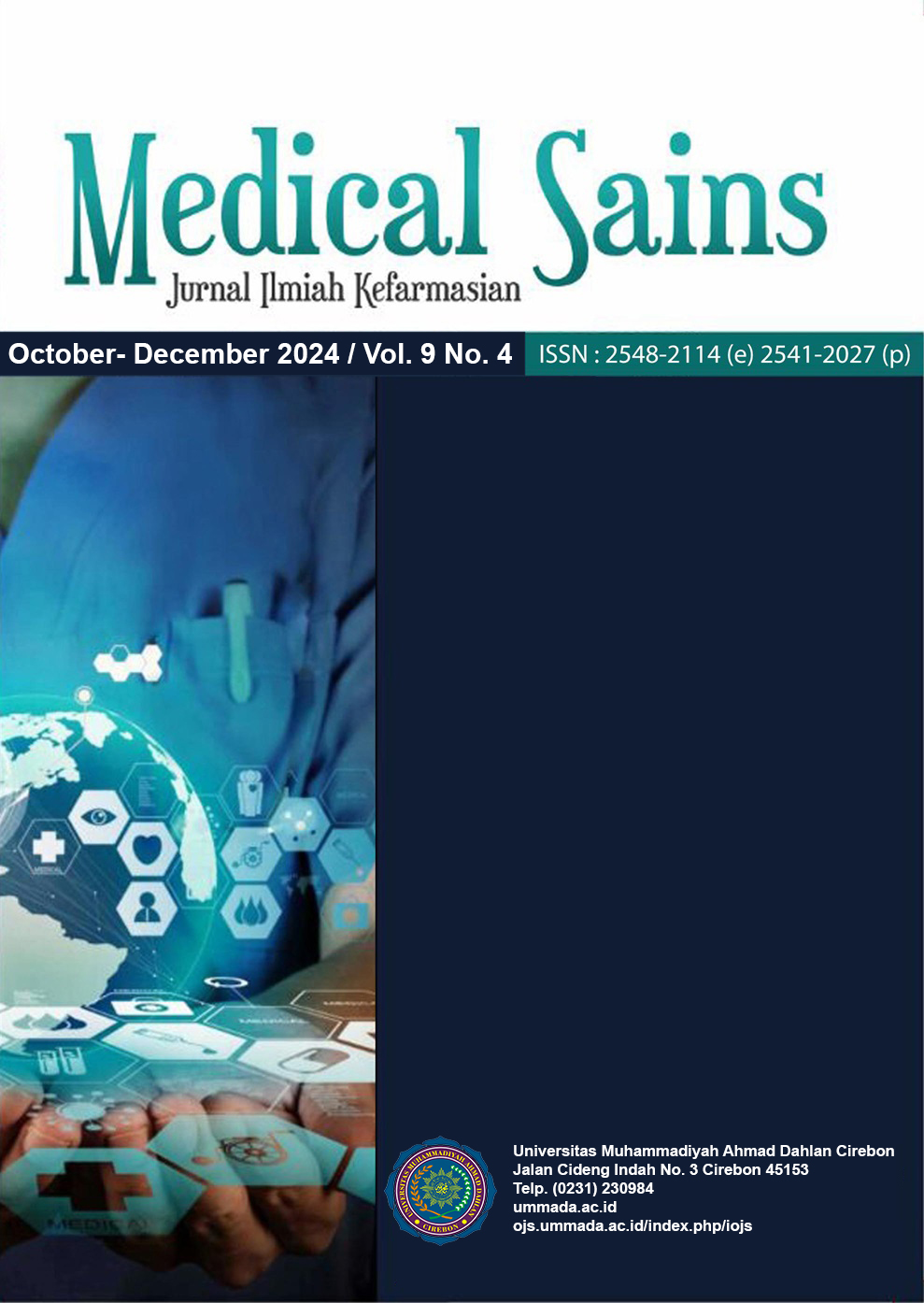REVIEW ON PHOTOSENSITIZER POTENTIAL OF NATURAL DYES FOR ANTIMICROBIALS USING PHOTODYNAMIC INACTIVATION
Main Article Content
Abstract
Infectious diseases still threaten human life, with incidents continuing to increase every year. The increase in antibiotic resistance in recent years has been one of the causes. This incident triggered research to find alternative antibacterial therapies. One such alternative therapy is Photodynamic Inactivation (PDI). This paper reviews the application of PDI for treating diseases caused by microorganisms, especially dermatitis, periodontitis, blood transfusions, and foodborne diseases, emphasizing the use of natural dyes as photosensitizers. The source for this article was obtained from several indexed databases, such as the National Center for Biotechnology Information (NCBI), Elsevier, and Google Scholar, from 2002 to 2024. The keywords used included “photodynamic therapy", “photodynamic inactivation (PDI)”, "antimicrobial photodynamic therapy (aPDT)", “laser-activated disinfection”, “photoactive disinfection”, “LED”, “natural photosensitizer”, “curcumin”, “riboflavin”, “hypericin”, “chlorophyll and chlorophyllin. Original (clinical and experimental) studies, case series, case reports, and reviews were also included. Letters to the editor and commentaries are excluded. After reviewing 148 relevant articles, 57 were selected. Full texts were read, and data were extracted and entered into tables. The review demonstrated that natural photosensitizers, such as curcumin, hypericin, riboflavin, and chlorophyll derivatives, have the potential to reduce the number of microorganisms in PDI therapy. Photosensitizers can be obtained from several natural sources. Using the PDI procedure, the ROS produced have been proven to effectively inhibit pathogenic microorganisms and can be widely used to treat diseases caused by microorganisms.
Keywords: curcumin, hypericin, riboflavin, chlorophyllin derivatives, PDI, natural dye, antimicrobial.
